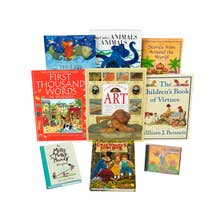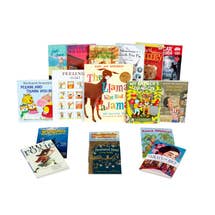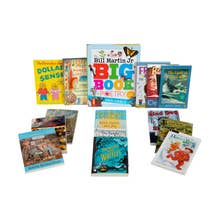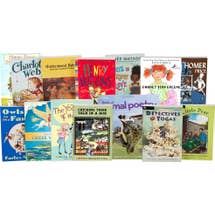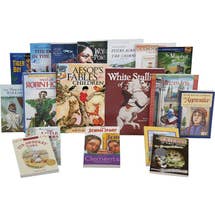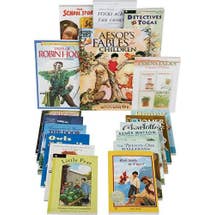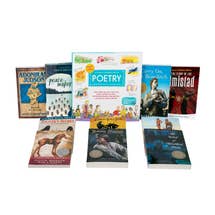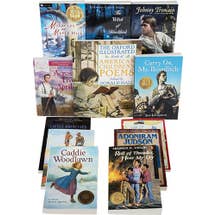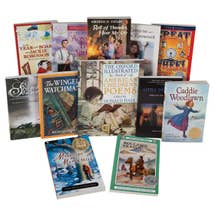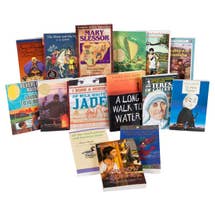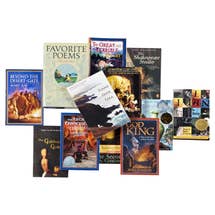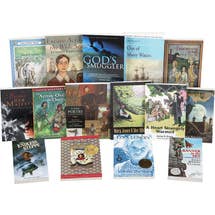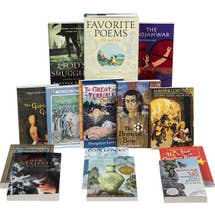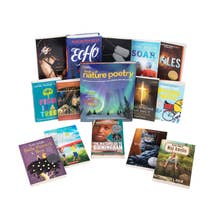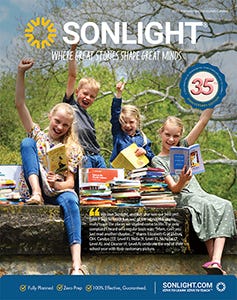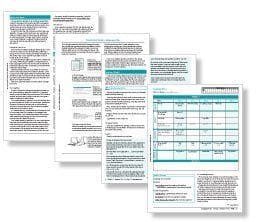We use cookies for performance, analytics and marketing. By using this site, you agree to our use of cookies. For more information, view our Cookie Notice and Privacy Policy.
Sonlight Read-Alouds
The powerful stories found in our Read-Alouds are certain to create discussion, engage young minds, and cultivate learning for the whole family.
Read-Aloud stories are quality literary works that you read to your children. Read-aloud books for children have several functions within Sonlight. Among them:
- To introduce your children to great literature that is beyond their personal reading capacity.
- To develop within your children a life-long love of reading. (Even though they may not be able to read a good book on their own, when you read great literature to them, it creates a thirst to read. They begin to think, "I love books! One day I'm going to read books like this!")
- To expand your children's vocabulary.
- To build listening skills--including the ability to visualize the meaning of spoken words.
- To develop an "ear" for good oral reading.
- To develop oral reading skills. (Having heard quality oral reading done by you, your children will imitate you. And,
- To give you and your children a context for sharing mutually significant times together.
Read-Alouds are part of the literature in your Sonlight program and are already included in your History / Bible / Literature program or All-Subjects Package.
Homeschool Read-Alouds
In History / Bible / Literature K through C, there is virtually no correlation between the books you read aloud and the subject matter of the History program.
Beginning with History / Bible / Lit D, however, History, Readers and Read-Alouds are tightly interwoven in each History / Bible / Literature program.
We have classified most of our books to read aloud as Read-Alouds (rather than as Readers), because they require greater reading skill than typical students at such grade levels have normally acquired.
But there are other reasons for classifying a homeschool reading book as a Read-Aloud.
Some Read-Aloud stories require deeper understanding of "the way things are"--in life in general or in a specific area. Others are emotionally charged enough that we figure you ought to be "right there" to help debrief your children.
And then there is that group of books we've classified as Read-Alouds simply because they are too good to let your children enjoy by themselves. We know you'd feel cheated if you weren't in on the adventure.
Individual Read-Alouds
You can purchase any of the Read-Aloud books individually by visiting our online store.
Additional Information
In order to spark discussion, we include questions for Read-Aloud books in our Instructor's Guides. Don't use these as the basis for book reports. They are for informal and brain-tickling discussions as a family.
With Read-Alouds, as with the Readers, History & Biographies, your participation can make a world of difference to the amount of benefit your child will gain. So ask questions, make use of the suggested discussion questions in your Instructor's Guide, talk with your child about what you are reading, share with your child what you think and feel and believe as a result of what you read together. Be an example to your child of how an educated person interacts with a quality piece of literature.
Hint: when you come to a word or passage that seems clearly beyond your child's current comprehension level, explain it "on the fly" — right then, while you're reading. One of our reasons for having you read aloud together is so you can interact and gain from each other's knowledge and experience. Another reason for having you read aloud: to encourage you and your child to read expressively. So fulfill that purpose: read expressively; practice reading with dramatic intonation — a throaty growl or a high-pitched squeal. Use different voices. Make these books live. Most of all, enjoy the experience of reading.
Many of the Read-Alouds are integrated with the History study in a given level, but many are just great stories. We chose them because your child's life will be enriched by having read them.
Read-Alouds are particularly well-suited to getting Dad involved in the educational process! Many fathers find that the Read-Alouds provide an opportunity for them to spend significant and highly enjoyable personal time with their children.
This may seem like a strange subhead. But we have found through the years, however, that many parents limit their children's opportunities by (incorrectly) pre-judging what their children can or cannot handle.
When you read to your children, you will find they can often comprehend far more than you would have ever thought possible.
Here's are some tips for reading aloud.
- Choose a comfortable spot to enjoy the experience of discovery together.
- Begin reading. Read with expressiveness and passion, adopting different tones and/or voices when different characters speak. Try to put yourselves into the characters of the people you are reading about. Example: do a British accent for British characters or a Spanish accent for Spaniards, etc.
- When you come across a word or phrase with which your children are unfamiliar, either explain it "on the fly" — right then, while you're reading, as if it were written in the text — or (if you don't know the meaning of a word) look it up together. If there is a reference to a place whose location you don't know, get out your map or globe and find it as well. This looking it up is an integral part of the learning experience.
- If a sentence is too difficult for your children to understand, either re-interpret it on the fly (as you are reading), or read the sentence as-is, then go back and explain it. (Children often understand more than we give them credit for! One Sonlighter even shared: "I have found, through embarrassing experience that I usually need to ask my children if they understand before simply launching into an explanation.)
- One of our reasons for reading aloud is so to interact with each other. Try to make the most of this opportunity! Discuss what you read. Use your books as launching pads for delving into tangentially related topics and for further research.
- Ask questions, talk with your children about what you are reading, and share with them what you think and feel, and believe as a result of what you are reading together. Seek to be examples to your children of how educated people interact with quality literature. As one Sonlighter shares: "Now that our older kids are more and more "on their own," I am thrilled by the way in which they will approach me with questions that disturb them: "Dad, I've been reading in Leviticus 19, and I just don't understand. Why does __________... ?" What a privilege that a habit of open communication and pursuit of truth is continuing long after any necessity has been laid upon them to come to me for help!)
- Break up long chapters as necessary to stop at suspenseful points when interest is still high. (Sonlight attempts to break the Read-Aloud assignments in this fashion for you.)
- Most of all, we enjoy the experience of reading.
Note that, in choosing books for inclusion in Sonlight Curriculum, we attempted to avoid books that include scary, boring or offensive passages. However, we know that different families — even as different children within families — have different tolerance levels. What is intellectually challenging to one may be highly offensive to another. What is terrifying to one may be merely strange or mildly humorous to another. And boredom? Sometimes it is not that one should skip a passage, but rather, that the passage requires some words of explanation so the child can understand what it is s/he is listening to. As always, good judgment is in order. Learn more about how to deal with books that include "bad" words, unsavory characters, and controversial topics.
Visit the Sonlight blog for even more tips, advice, and encouragement for reading aloud.
